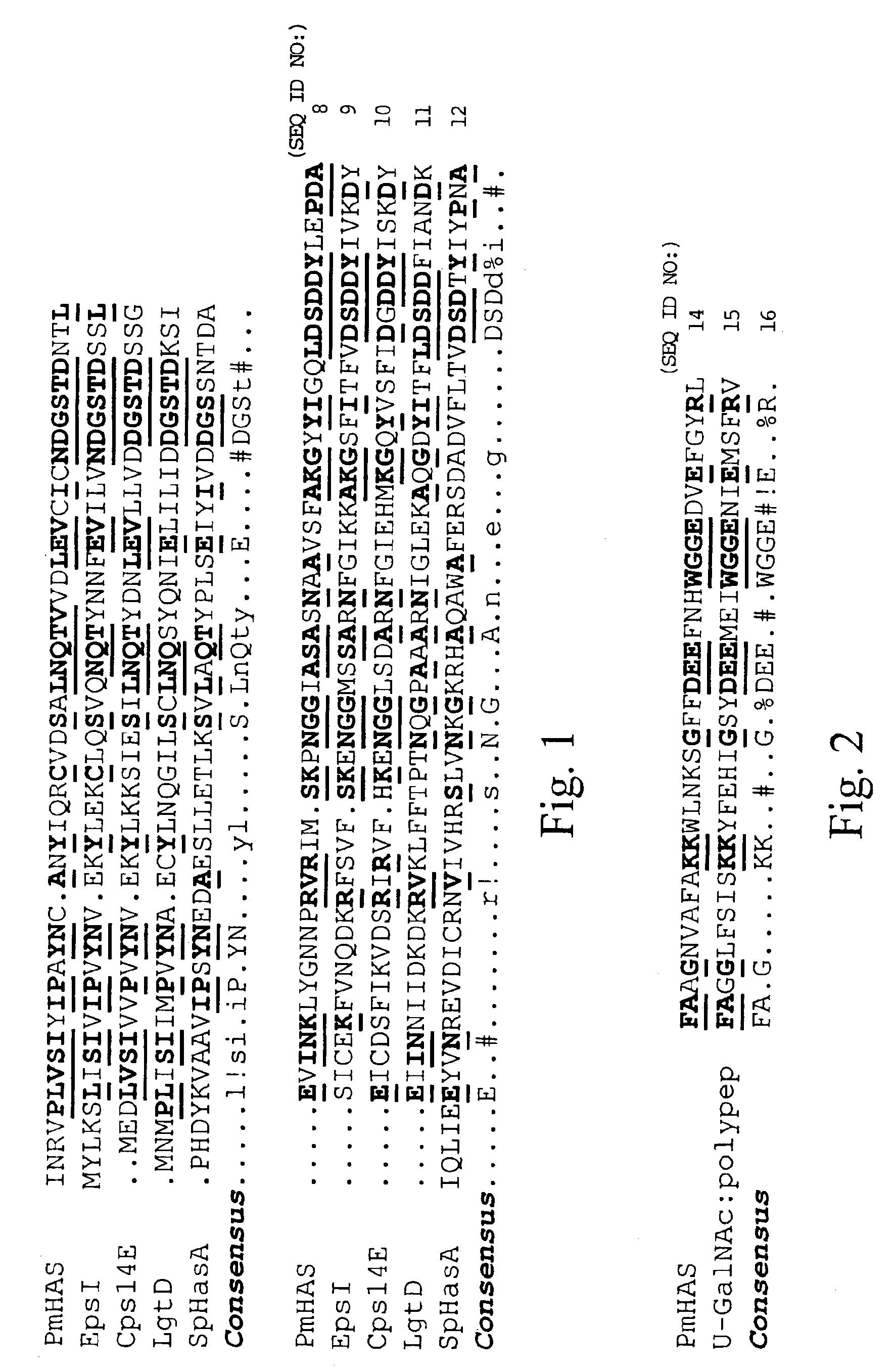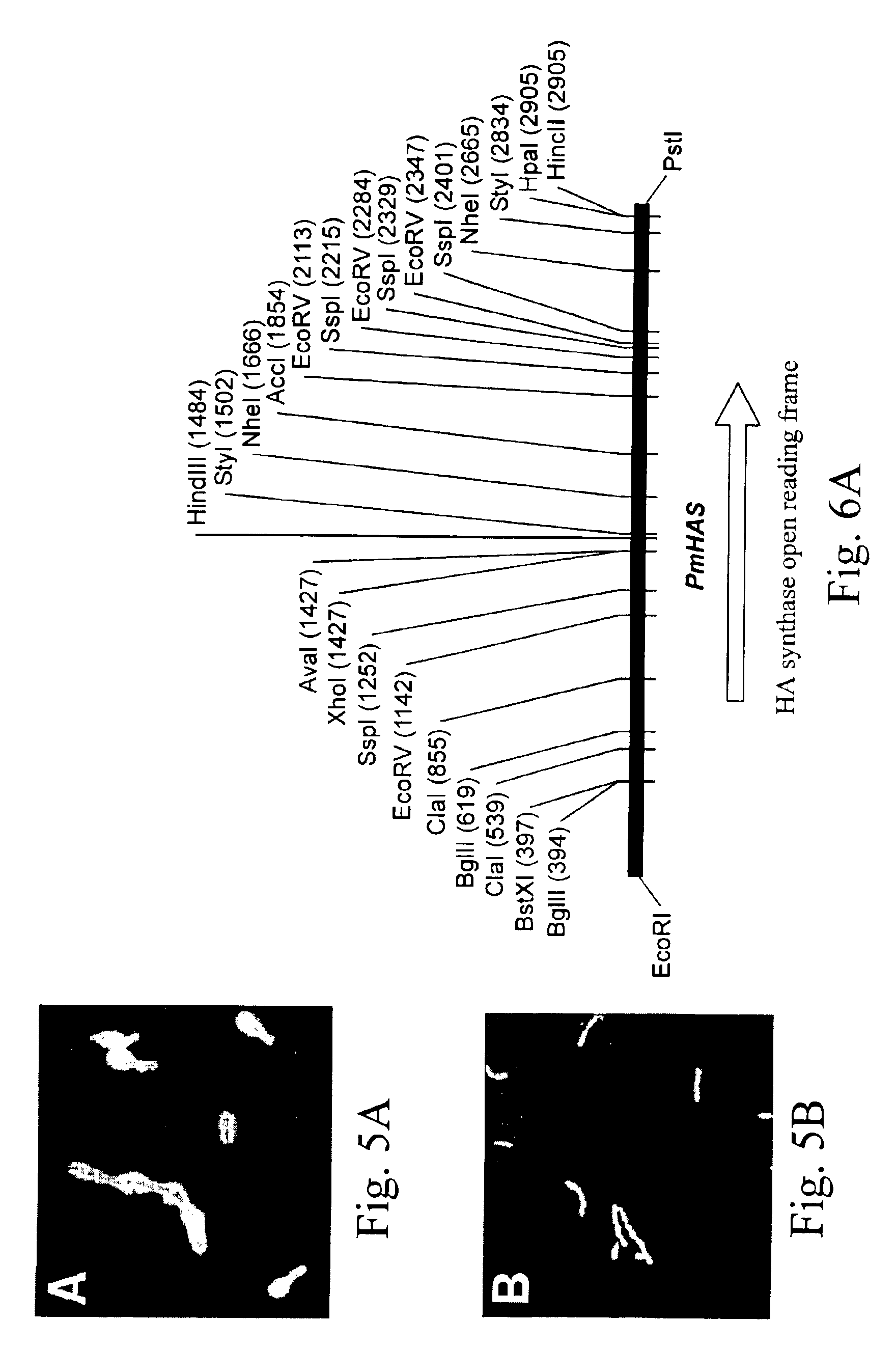DNA encoding hyaluronan synthase from Pasteurella multocida and methods of use
a technology of hyaluronan synthase and dna sequence, which is applied in the field of dna sequence encoding hyaluronan synthase from pasteurella multocida, can solve the problems of impeded host defenses, extensive losses to u.s. agriculture, and inability to clone or identify hyaluronan synthas
- Summary
- Abstract
- Description
- Claims
- Application Information
AI Technical Summary
Problems solved by technology
Method used
Image
Examples
Embodiment Construction
[0045]Before explaining at least one embodiment of the invention in detail, it is to be understood that the invention is not limited in its application to the details of construction and the arrangement of the components set forth in the following description or illustrated in the drawings. The invention is capable of other embodiments or of being practiced or carried out in various ways. Also, it is to be understood that the phraseology and terminology employed herein is for the purpose of description and should not be regarded as limiting.
[0046]As used herein, the term “nucleic acid segment” and “DNA segment” are used interchangeably and refer to a DNA molecule which has been isolated free of total genomic DNA of a particular species. Therefore, a “purified” DNA or nucleic acid segment as used herein, refers to a DNA segment which contains a Hyaluronate Synthase (“HAS”) coding sequence yet is isolated away from, or purified free from, unrelated genomic DNA, for example, total Past...
PUM
 Login to View More
Login to View More Abstract
Description
Claims
Application Information
 Login to View More
Login to View More - R&D
- Intellectual Property
- Life Sciences
- Materials
- Tech Scout
- Unparalleled Data Quality
- Higher Quality Content
- 60% Fewer Hallucinations
Browse by: Latest US Patents, China's latest patents, Technical Efficacy Thesaurus, Application Domain, Technology Topic, Popular Technical Reports.
© 2025 PatSnap. All rights reserved.Legal|Privacy policy|Modern Slavery Act Transparency Statement|Sitemap|About US| Contact US: help@patsnap.com



